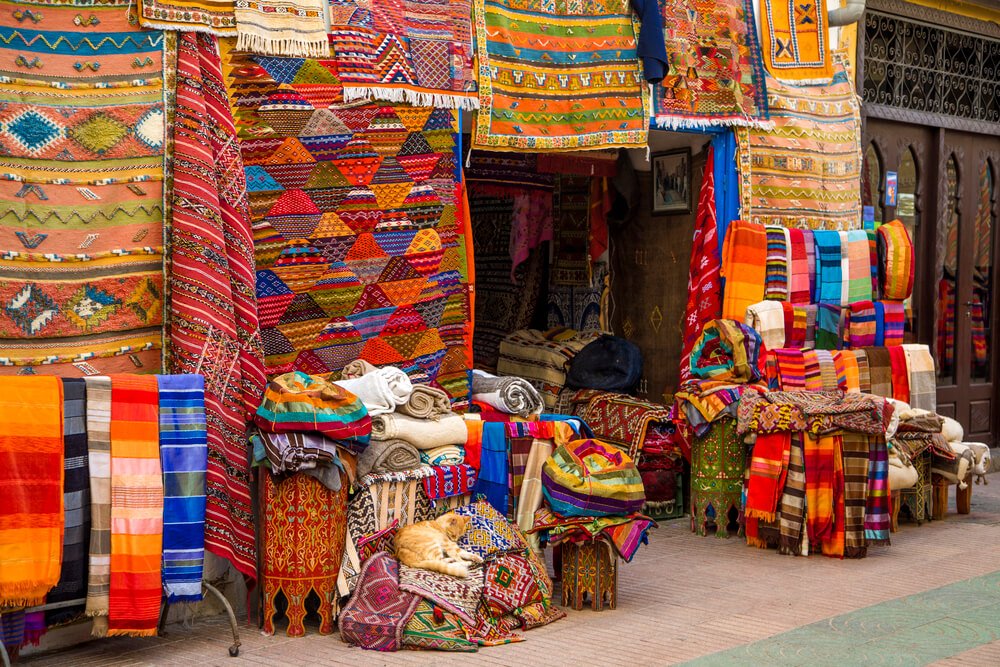Understanding fabrics, what they are and what they comprise will ensure we stay in tune with the earth.
Some fabrics are good for compost piles and even the regular garbage while others are inappropriate all the way around. So, what fabrics are most and least biodegradable?
As a general rule, anything that comes directly from the earth is biodegradable.
While there are some fabrics that aren’t biodegradable, things that come from plastics or other petroleum byproducts are not ideal.
As this list provides a good guideline, there should be further research to be certain.
Which fabrics are most biodegradable?
The following is a list of the most and best biodegradable fabrics available on the market.
There are some exceptions, as you will soon see.
But, generally speaking, these are top-notch in regards to efficiency and speed during decomposition.
Abaca
Also known as Manila hemp, Abaca is a cultivated leaf fiber from the plant of the same name.
It comes from the Philippines, produced by hand in a very intricate and deliberate way. It’s organic, sustainable and very biodegradable.
Bamboo
Recent years have seen an upsurge in bamboo fabrics for clothing. After natural enzymes break down this durable wood into a more pliable material, its fibers weave into fabric.
It’s sustainable because of how fast and plentiful it grows. There’s no need for pesticides or fertilizers either.
Because of its organic nature, bamboo is perfectly biodegradable and decomposes fast once it fully softens.
Unfortunately, not all manufacturers produce bamboo the same way, so buyer beware.
Cotton
Organic cotton is a good and healthy biodegradable material since it decomposes quickly.
It can go into the trash but also recycling or compost piles.
This is a traditional material that’s always been earth-friendly.
But, modern treatments and processes put this in the “questionable” category, discussed below.
Hemp
Hemp is one of the most natural and sustainable materials the earth provides.
It’s often cut and stripped by hand from the plant and then woven into fiber.
When it decomposes it doesn’t emit harmful gasses or toxic leaching. It biodegrades easy and quick.
Jute
Jute is a very tall plant from Bangladesh and India. Its fibrousness comes from the plant’s skin and stem that people spin into durable fabric.
Jute, more popularly called burlap, has a woody texture but it’s very biodegradable, sustainable and kind to the environment.
Linen
A fiber produced from flax, linen is a strong yet lightweight material that’s had worldwide acclaim for centuries.
It’s naturally resistant to moths, bacteria and it’s breathable.
However, dyes produced from linen are harmful to the environment. Therefore, only organic, natural production and dyes will qualify.
Lyocell (Tencel/Excel/Monocle)
Lyocell is a type of rayon that’s more biodegradable than the traditional version.
This is due in part to the closed-loop production system that recycles the production chemicals.
Plus, the material is biodegradable, but it’s very sustainable as well.
Ramie
Produced from the Boehmeria Nivea plant in Malaysia, ramie is a plant-derived fabric and an ancient material to the culture in Southeast Asia.
While it is biodegradable, it’s also super durable.
Therefore it does take some time to begin breaking down.
But it is compostable and sustainable.
Silk
An ancient fabric from silkworms, silk is one of the most resilient and strongest fabrics that’s also very biodegradable. It can take as much as four years to fully decompose, however.
Regardless, it’s antifungal, antimicrobial, comfortable, hypoallergenic and luxurious.
However, silk is neither the most sustainable material nor is it vegan-safe.
It takes 3,000 silkworms to make one pound of silk. And these worms die in the process of making the fabric. However, more humane methods are on the rise.
Which fabrics are least biodegradable?
Any fabric that contains plastic or other petroleum byproduct will not be biodegradable.
If they do, they will leave behind harmful microplastics that can take decades upon decades to breakdown.
Not only will they be harmful to the environment but they are also not sustainable.
They are things like:
- Acrylic
- Nylon
- Fleece
- Rayon
- Polyester
- Spandex/Lycra
Which fabrics are questionably biodegradable?
There are some things listed in the most biodegradable fabrics above that come with a warning.
It will depend on their growth, procurement, treatment and production.
Certain items that should very much be biodegradable aren’t because of the dyes, chemicals and other substances mixed in with them.
- Bamboo: Sometimes bamboo undergoes chemical treatments to soften the fibers of the wood faster. So, ensure the label guarantees sustainable practices.
- Cotton/Linen: While organic cotton and linen are biodegradable, most others are not. Harsh chemicals, dyes and blends with other non-biodegradable fibers prevent it from proper decomposition.
- Leather/Fur/Wool: Any animal-derived fabric can biodegradable, but only if the manufacturer labels it as such. Unfortunately, most of these come treated with harsh chemicals and other inorganic substances that they will not biodegrade well.
- Modal: Although partially from tree fiber cellulose, modal is semi-synthetic in a similar way as rayon. Although a wonderful material, the chemicals are toxic and do create a hazard for workers. It can breakdown, but it will take several decades.
Final Thoughts
There is a cornucopia of fabrics to choose from that are very biodegradable, sustainable and earth-friendly.
But, with certain ones, like linen, cotton or bamboo, you have to be careful about it.
Unless the manufacturer lists/advertises its sourcing and production practices, you will have to assume it’s not biodegradable.



